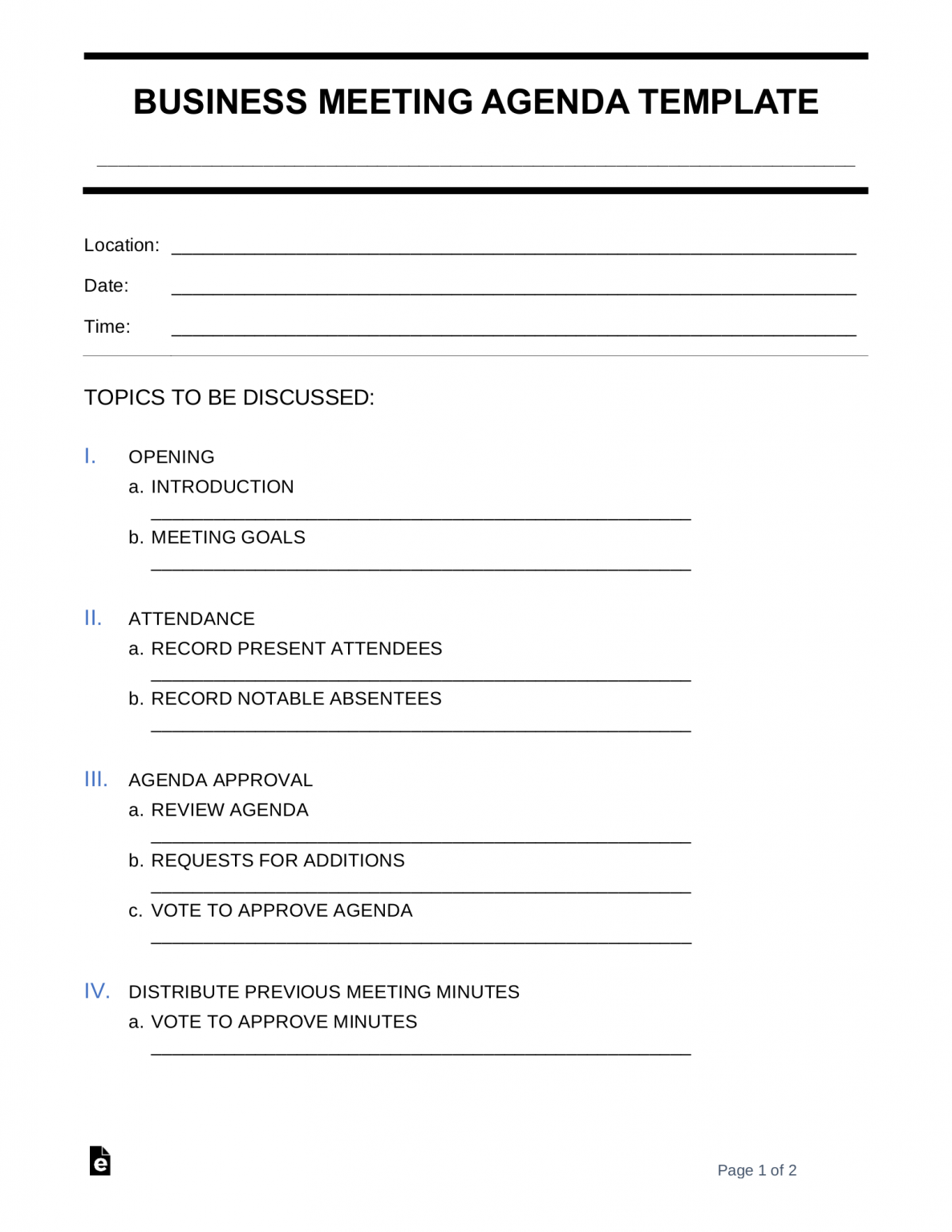
In a more formal environment, you might list first and last names and include titles.ħ. In a more casual environment, you might just list first names. When listing speakers on the agenda, deciding whether to include their titles will again depend on your company’s culture. Doing so will just make the meeting run long. That said, never include anyone on a meeting agenda who does not need to report. When figuring out the speaker order, be sure it aligns with your company’s culture. In other companies, junior associates do.

In some companies, senior management speaks first. Pay Attention to the Order of the Speakers ⌄ Scroll down to continue reading article ⌄ 6. If you have reserved the office conference room for an hour, that is the longest your meeting should last. Once the meeting agenda is approved and the speakers are set, email the agenda to all meeting attendees in advance. As a courtesy, be sure to let them both know you have taken this step. If the key player on a particular piece of business is away, ask another staffer to fill in for her. Avoid listing workers who are out of town or attending other meetings. Never include a speaker on the agenda without first taking this precaution. Follow Proper Meeting Agenda EtiquetteĪfter you’ve drafted the agenda, be sure to run it by your supervisor, your supervisor’s boss, and each person cited on the agenda. ⌄ Scroll down to continue reading article ⌄Ī week before the meeting, make it a point to visit with some of the key players at your company and simply ask, “Would you like to include anything on the meeting agenda?”Ģ. Getting their buy-in will make it more likely that they will attend the meeting and champion its outcomes. Your bosses and colleagues will be more engaged if you ask for their input. So, how do you go about crafting this all-important meeting agenda? Apply these 8 useful tips:

For example: “Outline the plan for developing our mentoring program set timelines make staff assignments.”Īgendas serve as a guide for the meeting facilitator, keep everyone in sync, and provide a format for the person taking the meeting minutes to follow. If it’s a brainstorming session, consider an agenda that lists expected outcomes. Choose different speakers for each topic, and ideally, allot times for each speaker. Meeting agendas set all topics to be covered. Workers actually say they enjoy participating in meetings if there is a clear objective and pertinent information is shared. When you follow up the meeting invitation with a detailed agenda, participants know to prepare. Scheduling a staff meeting signals to coworkers that their input is needed, or that assignments need to be made. You know the frustration you feel when a meeting falls ten minutes behind schedule while everyone politely waits for Susan to finish gushing about her trip to Bermuda? Meeting agendas act as gentle reminders to everyone assembled that time is valuable and to please stay on point. If you determine that a face-to-face meeting is imperative, write a meeting agenda to outline the discussion points, and assign times for each speaker. Ask first if the topics can’t be covered another way - through email, perhaps, or via a phone call with the key players. For many executives, meetings take up two of the five days of the workweek.Īll the more reason to make sure that every meeting is essential. This happens more often than you may realize.

The Importance of a Meeting Agenda A Meeting Without an Agenda Is like a Road Trip Without an ItineraryĪs a busy professional, you lose patience when you feel your valuable time is being wasted.
AGENDA TEMPLATE HOW TO
How to Write an Effective Meeting Agenda.


 0 kommentar(er)
0 kommentar(er)
